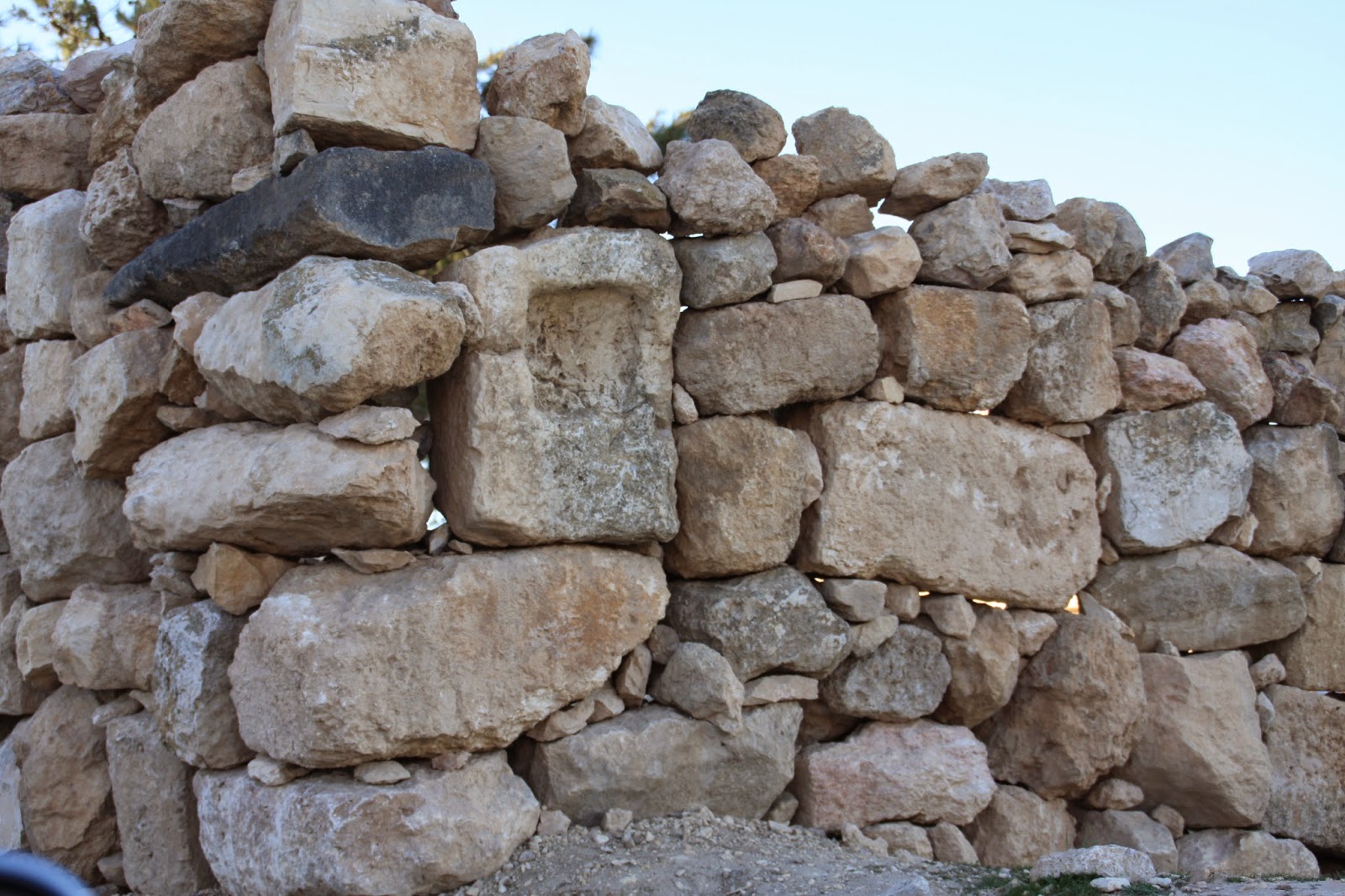One of the simple pleasures Dear Husband I most enjoy together is a drive in the country. It helps that we have the perfect country road on which to roam: The Mafraq-Jerash road winds through cultivated pastures, ancient-come-modern villages, olive orchards, and small pine forests. Whatever the season, the eye finds much to explore and enjoy.
Last Sunday, our drive had a destination: the village of Rihab, and site of at least 30 ancient churches, most of which date to the sixth and seventh century.
This friendly group of boys were choosing up sides for a game. Maybe hide and seek? Pretty cool playground, though Tatya confessed that growing up around ruins, she didn't think much of them until she was older and realized what they were. I like to think that playing among ruins and exploring old stone castles has influenced my children's imaginations.
We visited one of the "newer" churches and noted that the mosaic floors were more colorful, and the designs more intricate than those of the earlier churches.
Our last stop was the Rihab's Church of Saint George. Despite the disputed archaeological evidence for dating this church as early as the second century, making it the oldest known church in the world, the sign is still posted.
"the 70 beloved by God and the divine which has led some to believe that 70 early disciples of Jesus worshiped in the earlier cave, however other archaeologists feel that further authentication of the site is required." The article linked above has an interesting point about the Greek translation of the date, making the early dating of the church an "absolute impossibility".
Stones with ashlar masonry
Chinked walls--every stone is useful.
Sculpted stones are recycled
We visited one of the "newer" churches and noted that the mosaic floors were more colorful, and the designs more intricate than those of the earlier churches.
Our last stop was the Rihab's Church of Saint George. Despite the disputed archaeological evidence for dating this church as early as the second century, making it the oldest known church in the world, the sign is still posted.
Earlier mosaics?
The mosaic, mentioned in a previous post I wrote about the church of St. George, reads:


















No comments:
Post a Comment